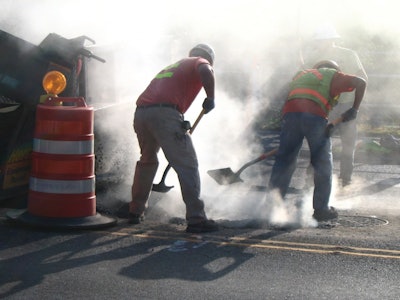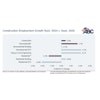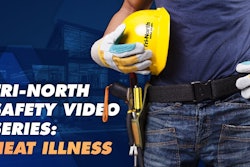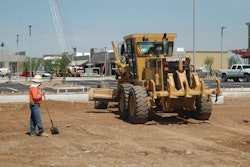
Hot weather has hit most parts of the country and it’s going to get worse as summer wears on. Working on a construction site during the heat of the summer, with asphalt that can reach temperatures of 300°F or more, can result in serious illness or even death. Workers exposed to extreme heat may experience symptoms of heat-related illnesses (HRI), such as heat cramps, heat rash, heat exhaustion, fainting, heat stroke and other symptoms.
This is not news. If you’ve been doing this job long, you know how harsh hot days can be. According to the Department of Occupational Safety and Health, heat-related illness is also linked to injuries from falls, equipment operation accidents and other on-the-job incidents. Such incidents can happen when someone with heat stress becomes fatigued, dizzy, confused or disoriented.
Since heat can lead to other issues and potential incidents, it is important that all of us working in the heat take care to avoid heat illness issues. Here are 12 tips to avoid heat illness from National Pavement Expo speaker John Meola:
- Water, water, everywhere. Drink plenty of proper fluids the night before a work day and continue to drink fluids (i.e., water or sport drinks) throughout the day. Remember that we not only need water, but electrolytes, which can be gained from drinking sport drinks in addition to water. Plan to make water easy to reach and keep it at a cool, drinkable temperature. Provide electrolyte replacement beverages. Avoid soda pop and energy drinks.
- Stay in good physical shape. Extra saddlebags mean more work and more sweat. Hit the gym or walk the oval a few times after dusk to work it off. Cut down on tobacco.
- Eat right. Avoid high-fat, greasy fast food. Try to eat a lighter meal during hottest time of the day. Half a sandwich, a bag of chips, unsweetened iced tea with a lot of lemon and an apple are the mid-range to aim for. Skip the fries.
- Be aware of the ‘post lunch dip’ effect of drowsiness. Circadian rhythms govern our sleep/wake cycle and this after-lunch interval is a tough one. You can minimize the fatigue by easing up on the mid-day meal.
- Get your sleep. REM sleep is harder to achieve in hot weather. Try to keep sleeping rooms cool. Use low-speed ceiling fans for air entrainment.
- Timing is everything. Whenever possible, plan the job to avoid direct sun or move up the start time. If working in direct sun can't be avoided, schedule frequent rest breaks in a shaded area. The outdoor tool industry sells a variety of shade umbrellas and portable coverings, if needed.
- Dress to stay cool. Engineered fabric athletic and recreational garments can reduce the heat load on the body. They offer trans-evaporative cooling, UV and insect protection. They are a little pricey but, depending on your location, it might be worth trying these out.
- Avoid going in and out of air conditioned climates. That’s a body slam each way in terms of adjusting.
- Be alert for signs of heat stress. The order of seriousness is: a) Heat cramps - Usually from poor hydration; take it easy, drink water, put feet up. b) Heat exhaustion – Knock off for the day, go someplace cool, rehydrate, rest. c) Heat stroke – Call 911. OSHA has also released a free app for mobile devices that enables workers and supervisors to monitor the heat index at their jobsites. The app displays a risk level for workers based on the heat index, as well as reminders about protective measures that should be taken at that risk level. It can be downloaded by visiting http://1.usa.gov/1ig612y.
- Plan for heat stress avoidance. Heat stress avoidance steps include maintaining proper hydration, pacing yourself and the crew, avoiding prolonged strenuous exertion, staying covered up in direct sun, etc.
- Cover your head. A wide-brim hard hat is actually pretty good head covering against the sun. Add a nape protector or wrap-around sun visor to maximize protection. Use sun block on any exposed skin.
- Cool it down. The neck and head pretty much govern the heat loading on the body, because a lot of blood flows through these parts. That’s why cooling "bandanas" are so effective. If you can keep the direct sun off the head and neck, it will help a lot. If you can add a cooling element to remove some caloric energy from your circulatory piping, better still.





![[VIDEO] OSHA Will Raise Maximum Civil Penalties by 78%](https://img.forconstructionpros.com/files/base/acbm/fcp/image/2016/07/default.578e5ea93a92e.png?auto=format%2Ccompress&fit=crop&h=167&q=70&w=250)














